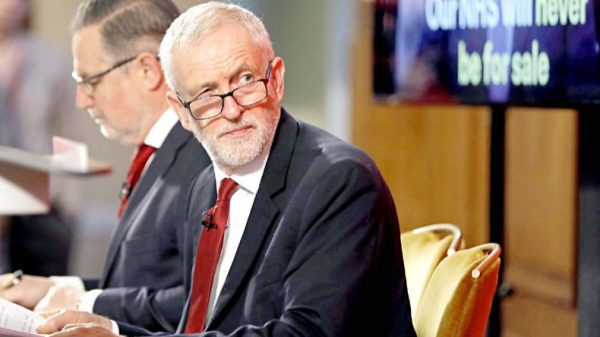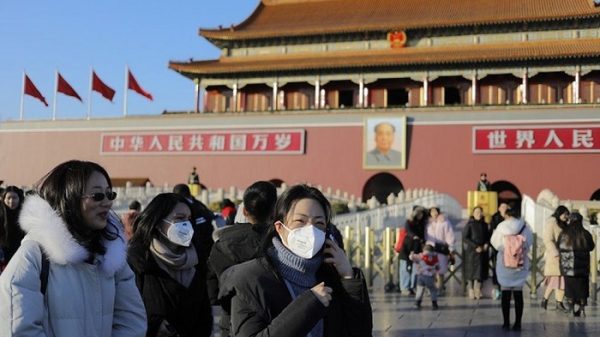The most important election in British history

DEMOCRACY in Britain has never been particularly strong or vibrant. Yet, for the first time in decades, the British people face a real choice at the ballot box in December. It wasn’t long ago that any possibility of radical change was excluded from the outset.
What changed was the Labour Party has been changed from below. It’s now the biggest left-wing party in Western Europe with over 485,000 members. Its leader Jeremy Corbyn is the most radical candidate to ever stand for prime minister.
Corbyn is one of the few MPs to have voted against British involvement in the wars of Afghanistan and Iraq, as well as Libya and Syria. He’s been consistent and unapologetic in his support of Palestinian rights, but also lesser known causes like the struggle of the Tamils in Sri Lanka.
Seasoned observers will point to Michael Foot as the only comparable figure. However, Foot supported Thatcher’s war with Argentina and was partnered with the Labour right. He was a good man, but Foot was also a spent force facing worse odds than we face today.
The conditions are so radically different that there is much more to hope for in 2019 than there ever was in 1983. Foot faced a triumphant right-wing government. Thatcher was stronger than ever, not just thanks to the 1982 war but because of an upturn in the global economy as well. Post-war social democracy was crumbling due to its own contradictions.
Now the situation has been turned around. After 40 years of neoliberal policy in Britain, the UK faces a housing crisis, a health crisis and a jobs crisis. This is on top of climate breakdown. Now in 2019 it’s the neoliberal consensus that appears to teetering on the edge of collapse.
The Conservative Party offers no solutions to any of these problems, just more of the same failed policies. This election is an opportunity to break with the past and shift the balance of power and wealth in the country. The stakes could not be higher.
The wreckers
THERE are far more variables at play in this age of crises. It’s not all about Labour or Conservatives in this election. Former metals trader Nigel Farage has set up a new platform for reactionary populism in the UK. He has modelled it on the Five Star Movement in Italy. There’s a new game in town: the Brexit Party.
The Brexit Party pledged to institute proportional representation and abolish the House of Lords and replace it with an elected second chamber. At the same time, the party has waged a battle for hearts and minds in Labour heartlands, including a plan to invest £200 billion in infrastructure outside London.
This combined with the promise of a ‘clean’ Brexit could appeal to some Labour Leavers. On the other hand, there are good reasons to suspect the Brexit Party is much less of a threat to Labour than the legacy media makes out.
Yes, it may be easier for Farage to pick up disaffected voters in Northern majority Leave constituencies but this does not mean those votes will hurt Labour’s chances. Farage could just split the right-wing opposition in Northern constituencies.
The Brexit Party tends to take two to three Tory votes for every Labour vote they win over. So it may be possible for this new party to cost Labour seats, but only if Labour voters stay at home. Of course, this all assumes the UK’s withdrawal from the EU is the only issue that matters in this election.
The UK electoral system does not favour electoral pacts or minority parties, it favours whichever mainstream party can consolidate its base at the expense of other parties. It is possible smaller, more marginal parties can chisel away at the bases of large, mainstream parties, but the results can be surprising.
The Conservative establishment decided to hold a referendum to try and cull the threat of UKIP in Tory seats and Labour seats they hoped to conquer in the future. It briefly looked like Brexit allowed an opening in British politics, whereby a swathe of voters could consider voting Labour or Conservative again.
There is another mainstream party in this picture who have chosen to define themselves by their Brexit stance. The Liberal Democrats have positioned themselves as the party of Remain against the Tories and Labour, who they claim are just Leavers. However, this has not meant the Remain vote has abandoned Labour in a dramatic exodus.
Many Tory marginal seats are vulnerable to the Lib Dems compared with Labour marginals. Most Liberal Democrat voters are less open to Labour than they are the Conservative Party. Even though they tend to be more open on immigration, Liberal Democrat voters tend to be more hostile to the left. This is why several Tory MPs have joined the Lib Dems in the last few months.
Despite the media narrative, the Labour Party gained in Southern Remain areas in the May 2019 local elections. The Liberal Democrats stress the huge swing seen in the European elections, however, those votes were cast precisely because the voters knew it was never going to affect domestic politics.
The European elections saw the Lib Dems surge to second place (the Brexit Party came first), which led centrists to conclude the Labour Party had failed to mobilise Remainers. Yet the evidence suggests Labour still carries a core Remain vote.
This is despite the lack of ‘clarity’ that a liberal claim is holding back Labour’s support among Remain voters. Labour’s strategy on Brexit has morphed from a soft Leave position to favouring a fresh referendum on the terms of Leave. Nevertheless, it’s not good enough for centrists because the issue was never Brexit – it was Corbyn.
The real danger
THERE are many real risks going into the election. The terrain could well suit a Conservative leader posturing as the man of the people against parliament. Prime minister Boris Johnson has a clear, albeit fatuous message: ‘Get Brexit done’.
Not only are most voters tired of Brexit, many Leave voters are seething with rage that Brexit has not been delivered. The Tories have popularised the betrayal narrative that parliament is full of Remainers blocking the UK’s path out of the EU. However, if pro-Leave MPs were united, the pro-Remain MPs would not be able to thwart the government on Brexit.
The Johnson government is still in its honeymoon with voters, though the prime minister is polling worse than Theresa May was before the 2017 election. May was enjoying approval ratings comparable to Blair and Thatcher at the height of their power. It didn’t take much to shatter her standing among the public.
Another factor is the timing of the election. Certain chunks of the electorate are less inclined to turn out on a cold, winter day than they would be at the height of summer. This could hurt the left if too many working people decide to stay home rather than go out in the cold and vote. Fortunately, the rise of postal-voting could combat this.
It’s possible that the combination of bad weather, anti-politics and exhaustion could allow the Tories to gain enough seats to hold the balance of power. Though it is still unclear what party would back the Tory agenda, the Conservatives have cost themselves a lot of support on Brexit.
Johnson still has to get his deal through parliament and the Democratic Unionist Party is unlikely to back it without serious revisions. Hard-line Ulster loyalists feel they’ve been stabbed in the back more than once by this government, though it’s possible the Labour right would back the deal and help squeeze it through.
Afterwards, the Tories would have to find a way to win back the DUP to make the rest of their agenda work but that’s not guaranteed either. The alternative is to find a way to secure Lib Dem support for a Tory deal – perhaps in exchange for a confirmatory referendum. This isn’t a safe bet either.
The Lib Dems may have hinted they would be open to working with a Tory government on an issue-by-issue basis, but it’s still possible Johnson would lack the support he needs from parliament to get his way. In other words, the UK may be stuck in a stalemate even after this election if Labour does not come out on top.
Even against these odds, the Corbyn project could still succeed. The terrain may favour a hard-right nationalist turn in England, however, the Labour left has the numbers and the infrastructure to fight the establishment and win. There is still plenty to play for in this battle over the future of the UK.
CounterPunch.org, December 5.























Leave a Reply